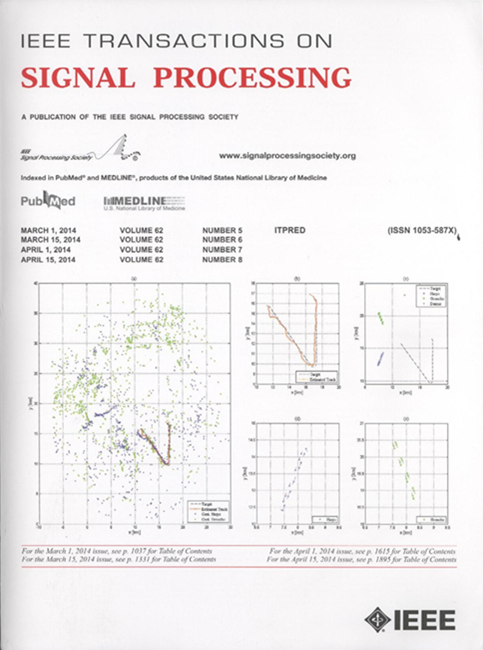Interleaved Hidden Markov Processes Inference for Deinterleaving Radar Pulse Sequences
IF 5.8
2区 工程技术
Q1 ENGINEERING, ELECTRICAL & ELECTRONIC
引用次数: 0
Abstract
The Hidden Markov Process (HMP) has been widely used to model radar pulse sequences. For the radar signal deinterleaving task in an electronic reconnaissance system, the intercepted radar pulse sequences are assumed to be interleaved hidden Markov processes (IHMP). In this context, this paper proposes a generative model to represent the IHMP and reformulates the deinterleaving problem as a posterior inference task. To compute the posterior probability, we first design an exact inference algorithm. However, due to the combinatorial nature of the hidden state representation, exact inference becomes computationally intractable. To address this limitation, we further develop a sampling-based method and two variational-based methods, yielding tractable solutions for the posterior computation. Finally, a theoretical lower bound on the error probability is derived based on the likelihood ratio test, with the proposed methods shown to get reasonably close to the bound. Simulations on diverse radar pulse signal datasets verify that variational inference with a structured approximation delivers a superior balance between deinterleaving accuracy and computational efficiency, making it a promising alternative to exact inference methods and search-based methods.去交错雷达脉冲序列的交错隐马尔可夫过程推理
隐马尔可夫过程(HMP)被广泛应用于雷达脉冲序列的建模。针对电子侦察系统中雷达信号的去交错任务,将截获的雷达脉冲序列假定为交错隐马尔可夫过程。在此背景下,本文提出了一个生成模型来表示IHMP,并将去交错问题重新表述为后验推理任务。为了计算后验概率,我们首先设计了一个精确的推理算法。然而,由于隐藏状态表示的组合性质,精确推理在计算上变得难以处理。为了解决这一限制,我们进一步开发了一种基于抽样的方法和两种基于变分的方法,为后验计算提供了易于处理的解决方案。最后,基于似然比检验导出了误差概率的理论下界,所提出的方法与该下界较为接近。对不同雷达脉冲信号数据集的仿真验证了结构化近似的变分推理在去交错精度和计算效率之间提供了卓越的平衡,使其成为精确推理方法和基于搜索的方法的有希望的替代方法。
本文章由计算机程序翻译,如有差异,请以英文原文为准。
求助全文
约1分钟内获得全文
求助全文
来源期刊

IEEE Transactions on Signal Processing
工程技术-工程:电子与电气
CiteScore
11.20
自引率
9.30%
发文量
310
审稿时长
3.0 months
期刊介绍:
The IEEE Transactions on Signal Processing covers novel theory, algorithms, performance analyses and applications of techniques for the processing, understanding, learning, retrieval, mining, and extraction of information from signals. The term “signal” includes, among others, audio, video, speech, image, communication, geophysical, sonar, radar, medical and musical signals. Examples of topics of interest include, but are not limited to, information processing and the theory and application of filtering, coding, transmitting, estimating, detecting, analyzing, recognizing, synthesizing, recording, and reproducing signals.
 求助内容:
求助内容: 应助结果提醒方式:
应助结果提醒方式:


